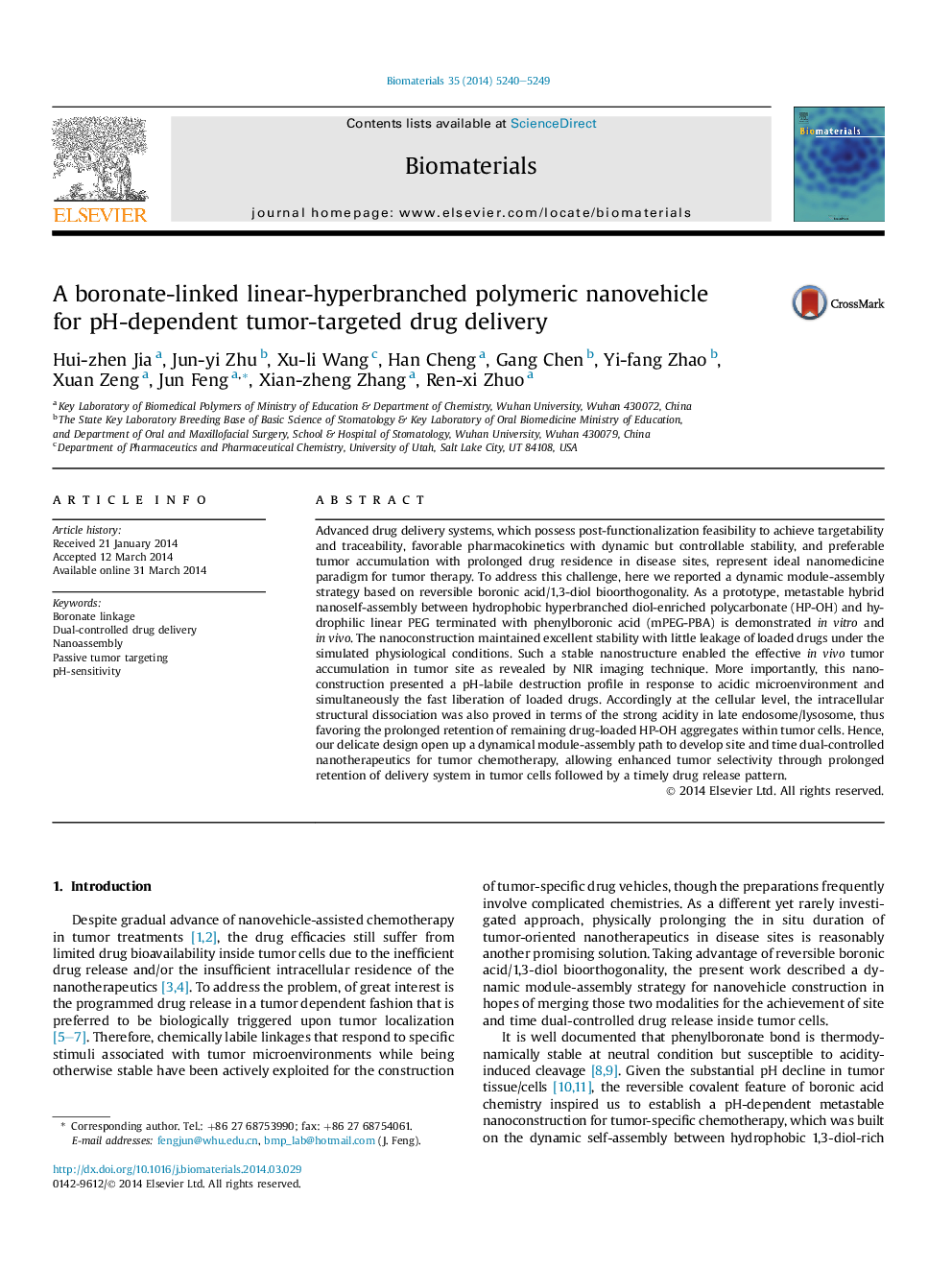| Article ID | Journal | Published Year | Pages | File Type |
|---|---|---|---|---|
| 10227354 | Biomaterials | 2014 | 10 Pages |
Abstract
Advanced drug delivery systems, which possess post-functionalization feasibility to achieve targetability and traceability, favorable pharmacokinetics with dynamic but controllable stability, and preferable tumor accumulation with prolonged drug residence in disease sites, represent ideal nanomedicine paradigm for tumor therapy. To address this challenge, here we reported a dynamic module-assembly strategy based on reversible boronic acid/1,3-diol bioorthogonality. As a prototype, metastable hybrid nanoself-assembly between hydrophobic hyperbranched diol-enriched polycarbonate (HP-OH) and hydrophilic linear PEG terminated with phenylboronic acid (mPEG-PBA) is demonstrated in vitro and in vivo. The nanoconstruction maintained excellent stability with little leakage of loaded drugs under the simulated physiological conditions. Such a stable nanostructure enabled the effective in vivo tumor accumulation in tumor site as revealed by NIR imaging technique. More importantly, this nanoconstruction presented a pH-labile destruction profile in response to acidic microenvironment and simultaneously the fast liberation of loaded drugs. Accordingly at the cellular level, the intracellular structural dissociation was also proved in terms of the strong acidity in late endosome/lysosome, thus favoring the prolonged retention of remaining drug-loaded HP-OH aggregates within tumor cells. Hence, our delicate design open up a dynamical module-assembly path to develop site and time dual-controlled nanotherapeutics for tumor chemotherapy, allowing enhanced tumor selectivity through prolonged retention of delivery system in tumor cells followed by a timely drug release pattern.
Related Topics
Physical Sciences and Engineering
Chemical Engineering
Bioengineering
Authors
Hui-zhen Jia, Jun-yi Zhu, Xu-li Wang, Han Cheng, Gang Chen, Yi-fang Zhao, Xuan Zeng, Jun Feng, Xian-zheng Zhang, Ren-xi Zhuo,
